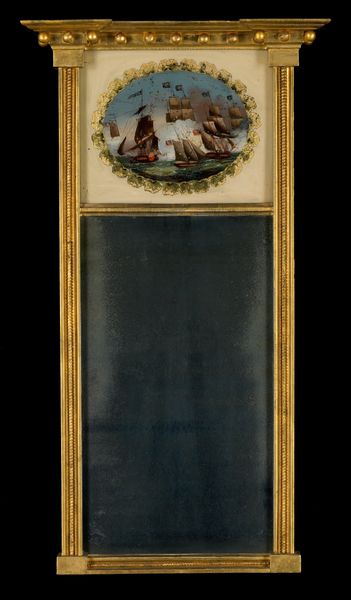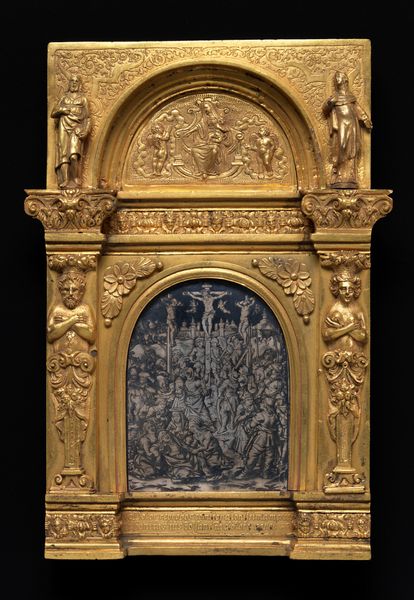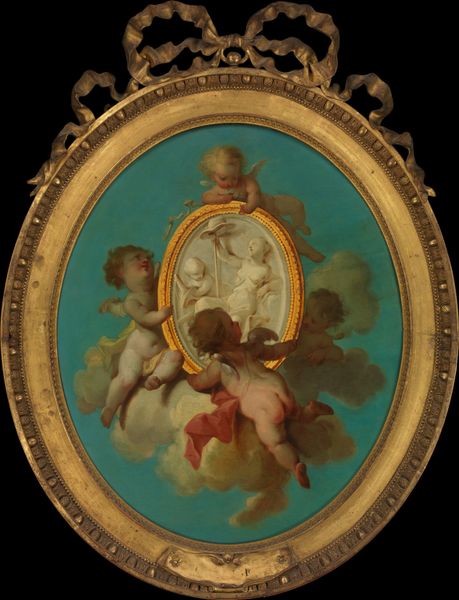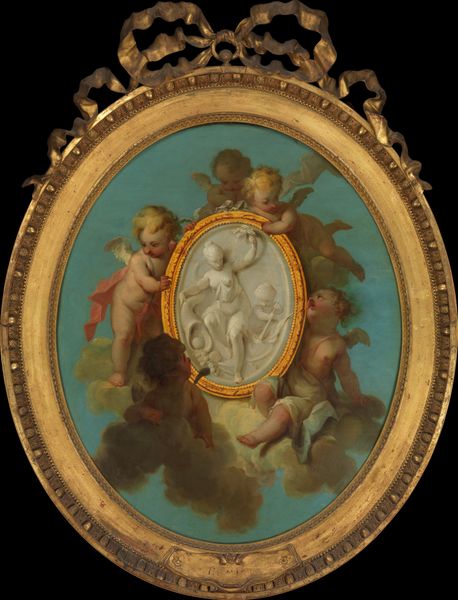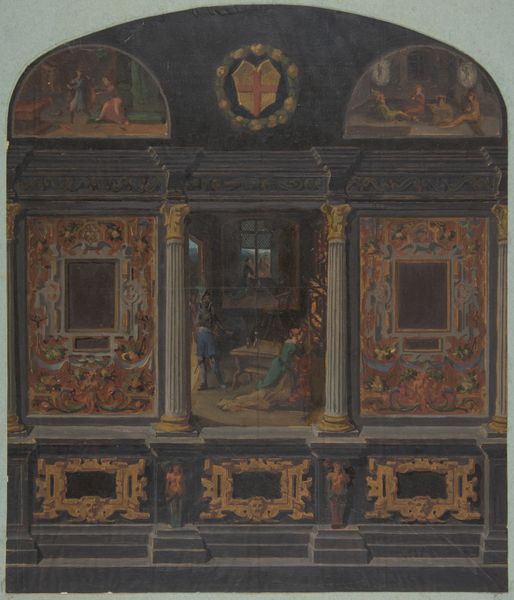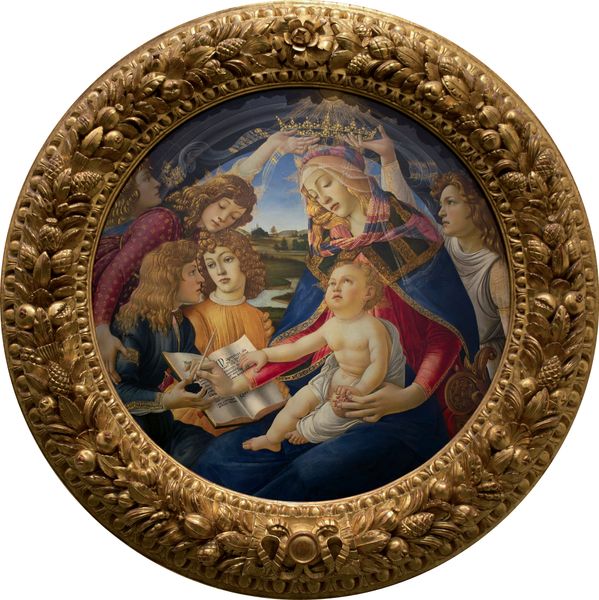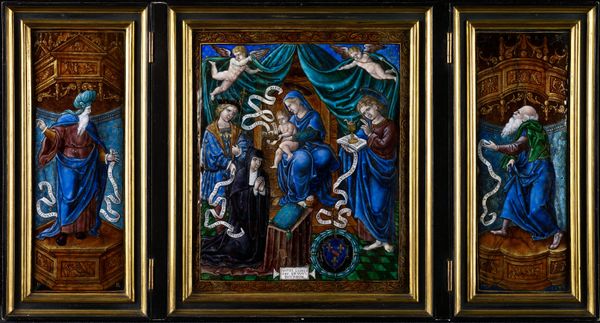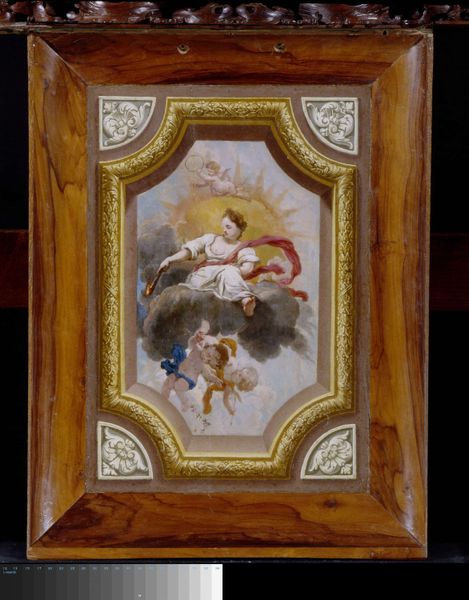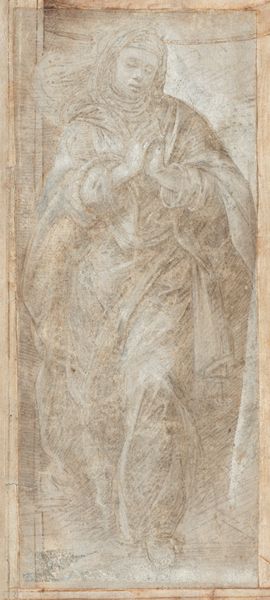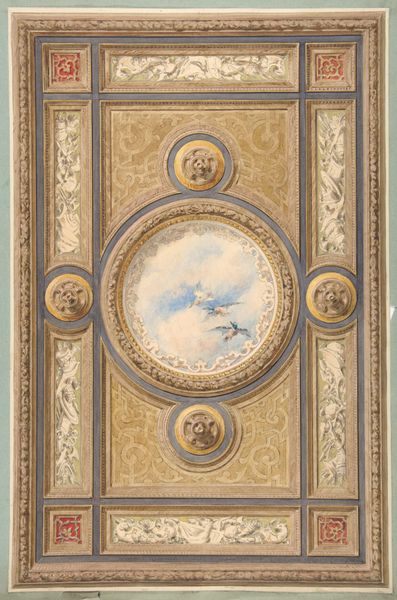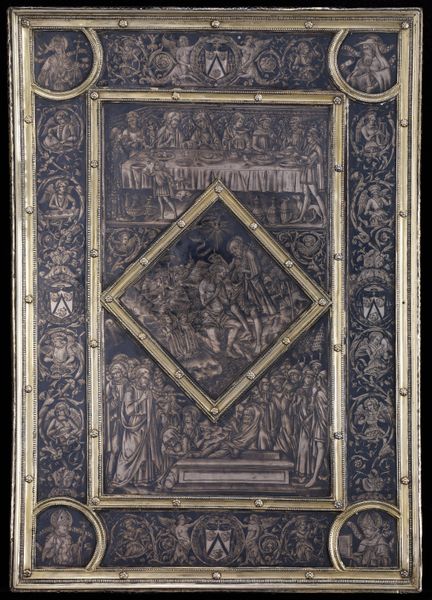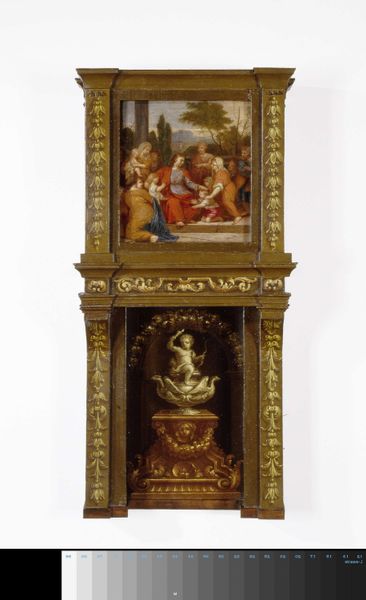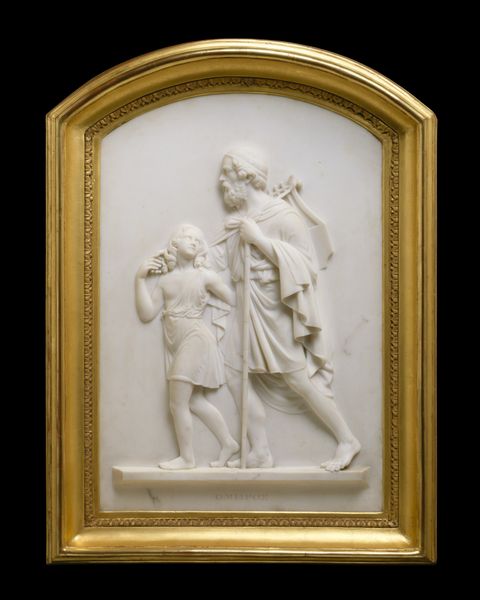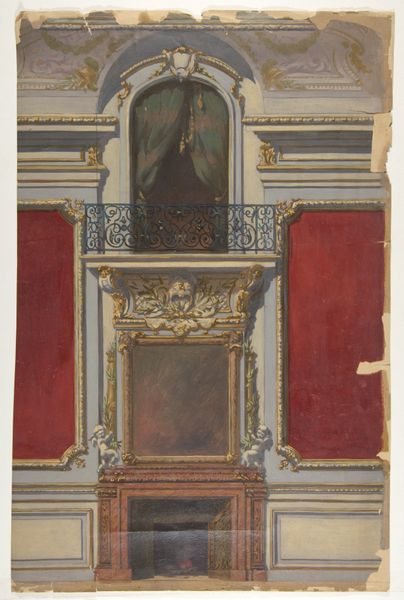
tempera, painting, fresco
#
tempera
#
painting
#
mosaic
#
figuration
#
fresco
#
traditional architecture
#
crucifixion
#
history-painting
#
italian-renaissance
#
early-renaissance
#
angel
#
christ
Dimensions: Painted surface 5 1/8 x 10 1/4 in. (13 x 26 cm)
Copyright: Public Domain
Editor: This panel, "The Trinity," painted between 1488 and 1501 by Bartolomeo di Giovanni, uses tempera, and the scene is rather intense. What's fascinating to me is how the artist has depicted such a theological concept in a visual form. What are your thoughts? Curator: Indeed. Notice how the symbolism embedded within this seemingly simple composition speaks volumes. Christ on the cross, held by God the Father, with attendant angels, becomes a visual representation of divine love and sacrifice. Consider how the very act of depicting the Trinity challenged established artistic norms. Does the composition remind you of earlier iconic representations of this scene? Editor: It does! The hieratic scale is very apparent. How do you feel this piece plays into cultural memory, especially for its time? Curator: The Renaissance sought to revive classical ideals, but religious imagery held immense power. This image functions as a bridge. The classical balance in the composition exists alongside the intense emotionality of the crucifixion. Reflect on the viewers for whom this painting was made. Editor: So the painting is more than just a scene, it's a meditation on faith itself. What would viewers at the time make of that decision? Curator: Exactly. By visually uniting the Father and the Son in this act of ultimate sacrifice, the artist evokes a profound sense of divine connection, intended to foster deep personal reflection on matters of salvation. Editor: That's helpful; seeing how art serves cultural needs enriches the whole viewing experience for me! Curator: And for me as well. Understanding how artists visualize faith offers fascinating insights into the spiritual life of the Renaissance.
Comments
No comments
Be the first to comment and join the conversation on the ultimate creative platform.
